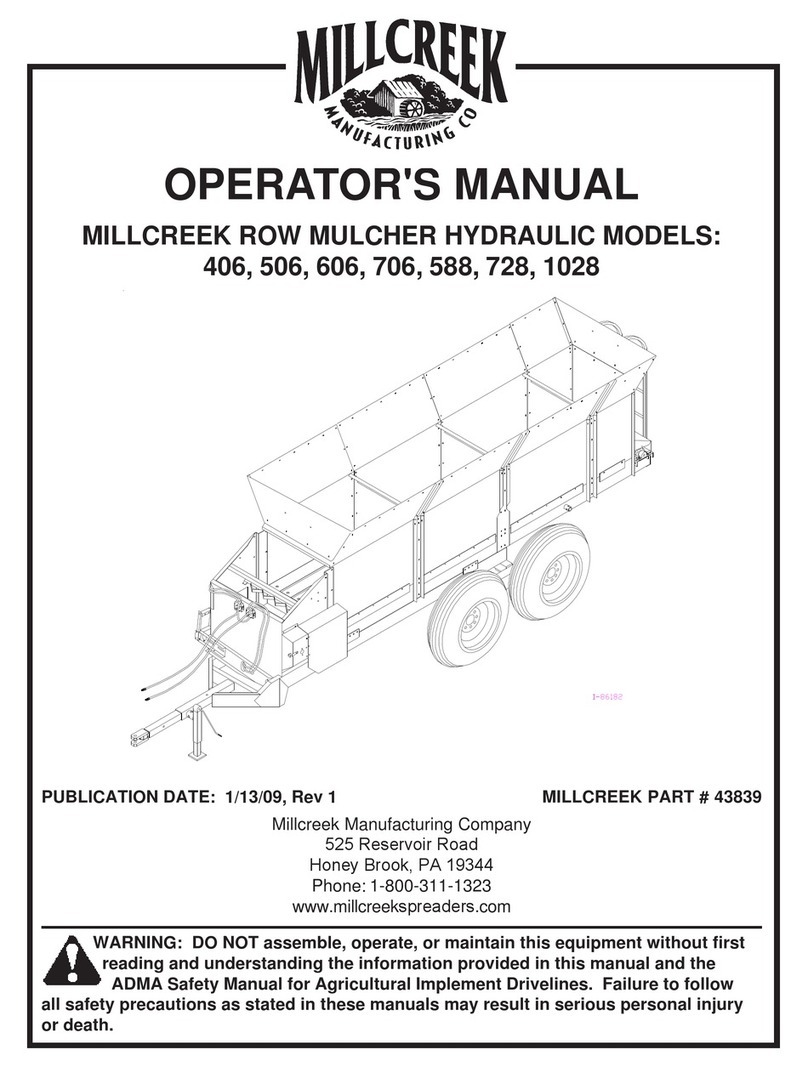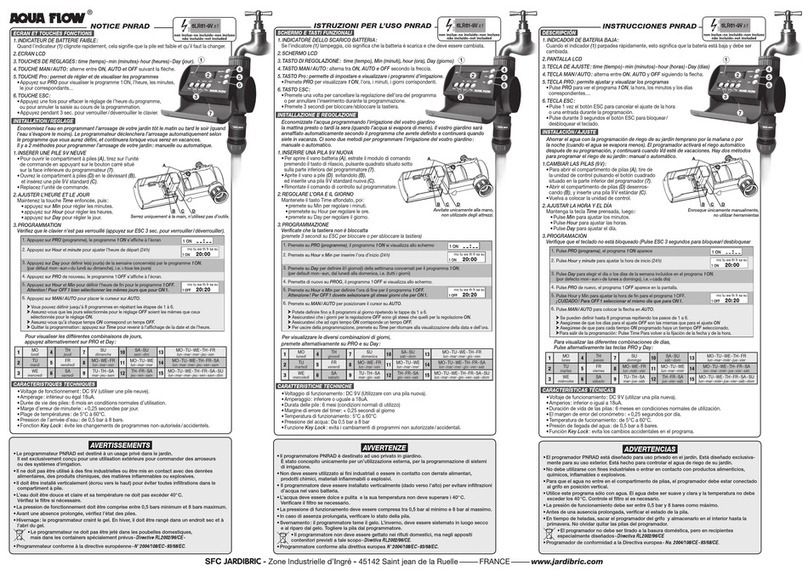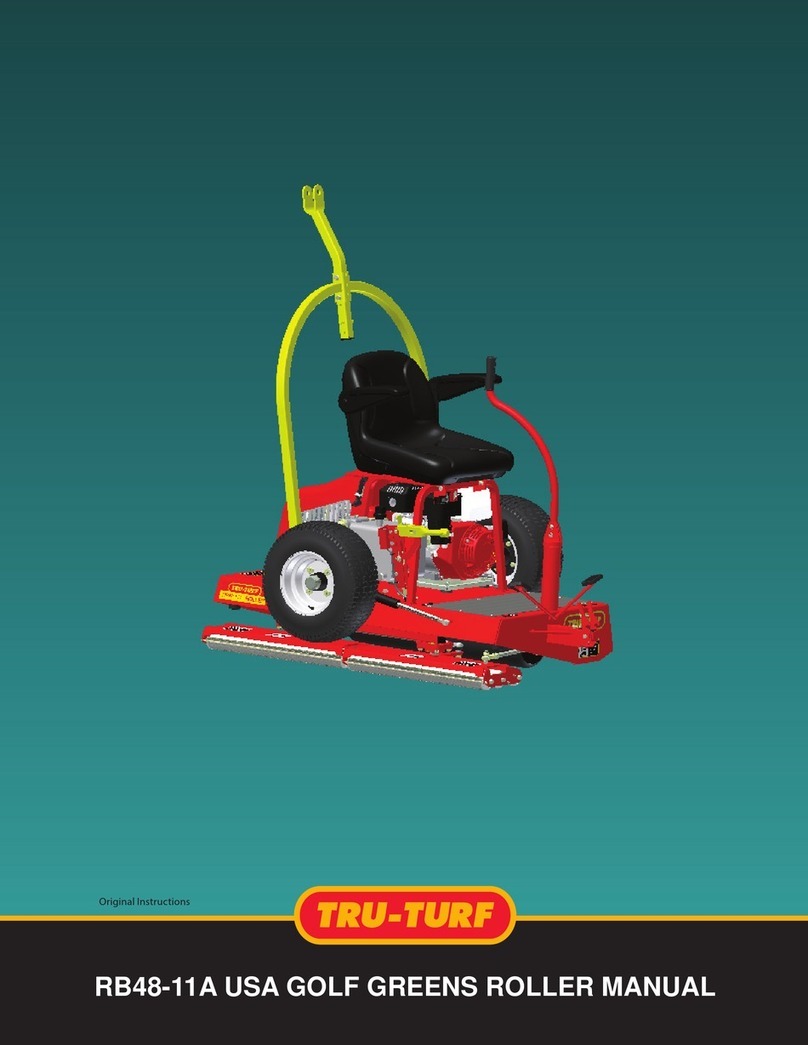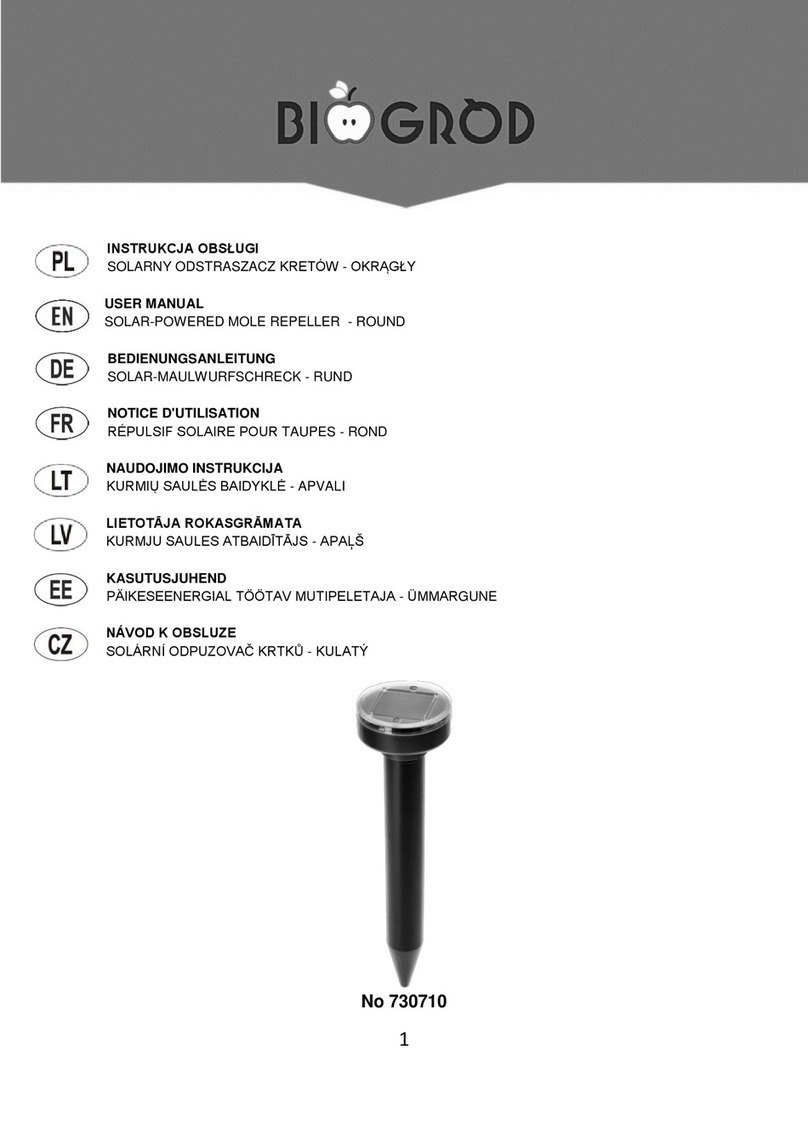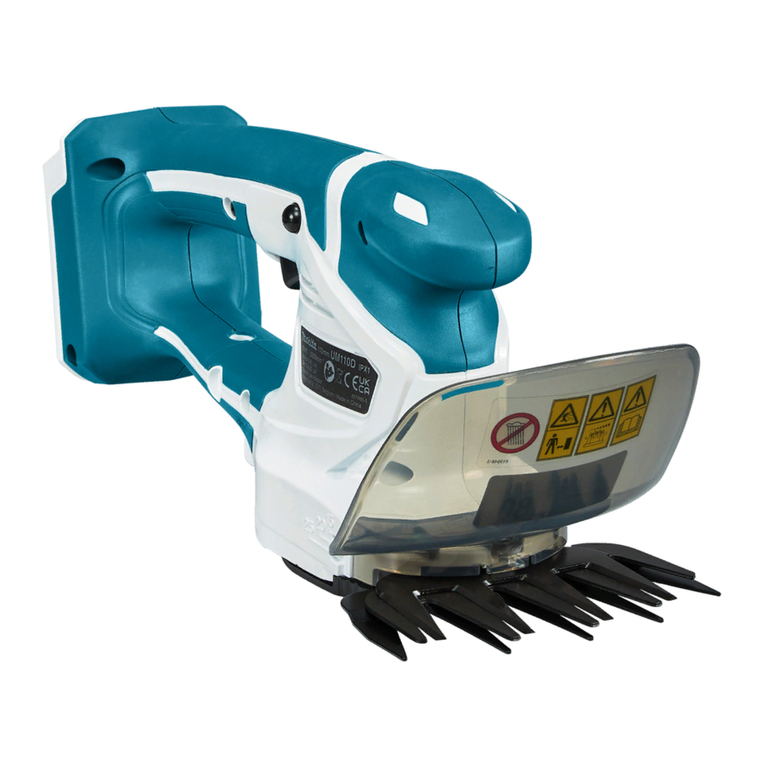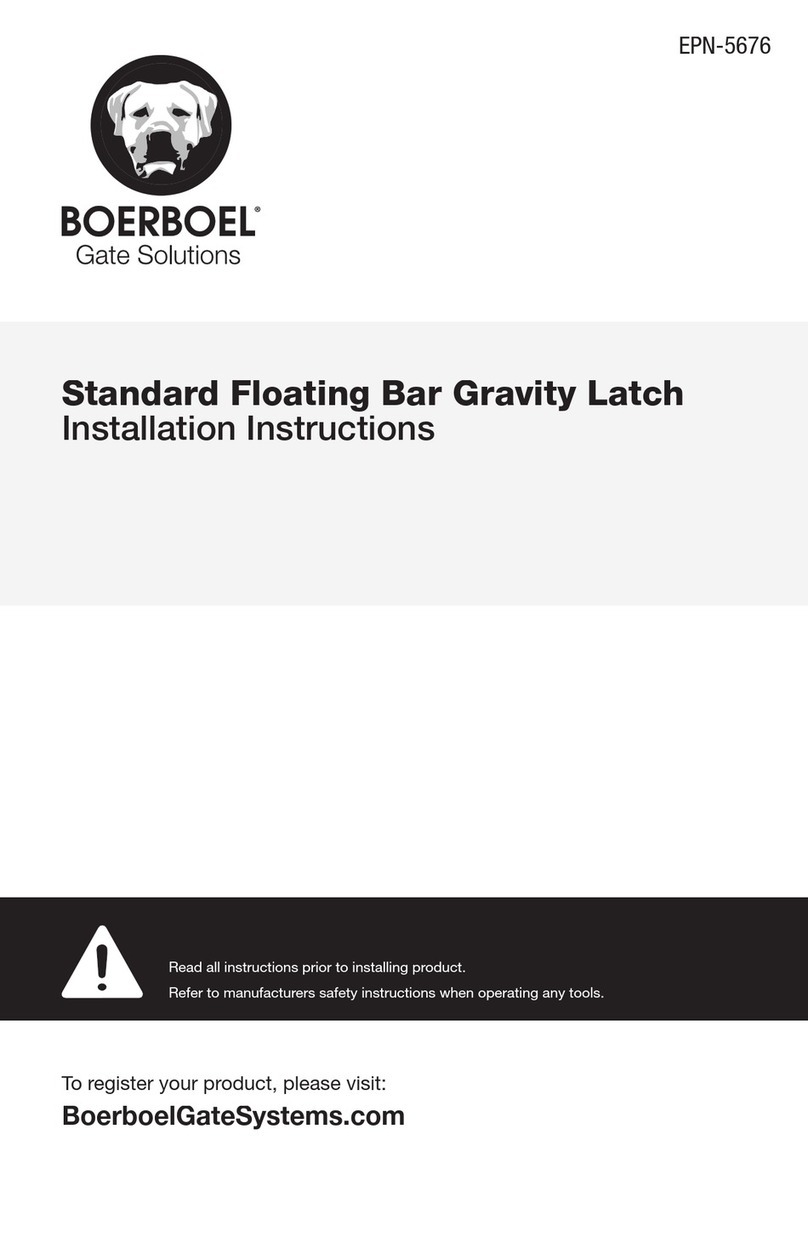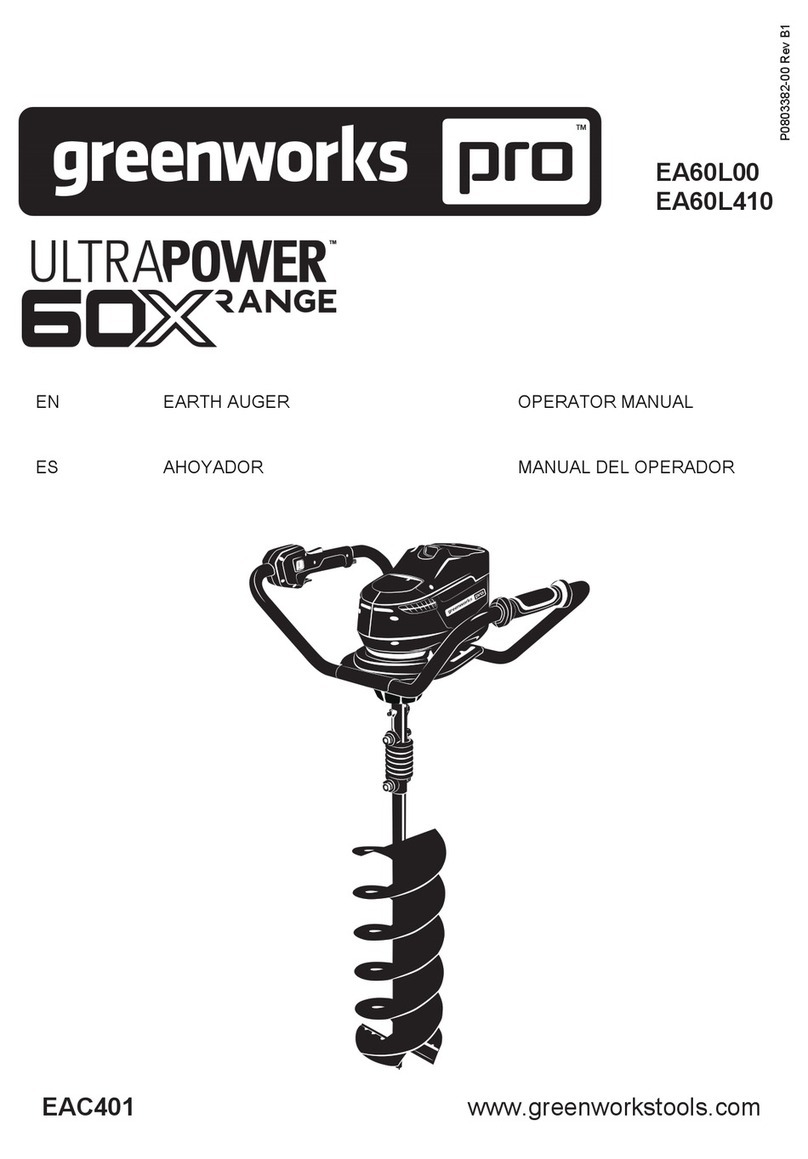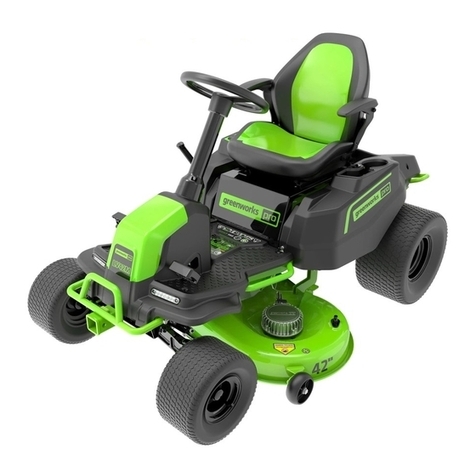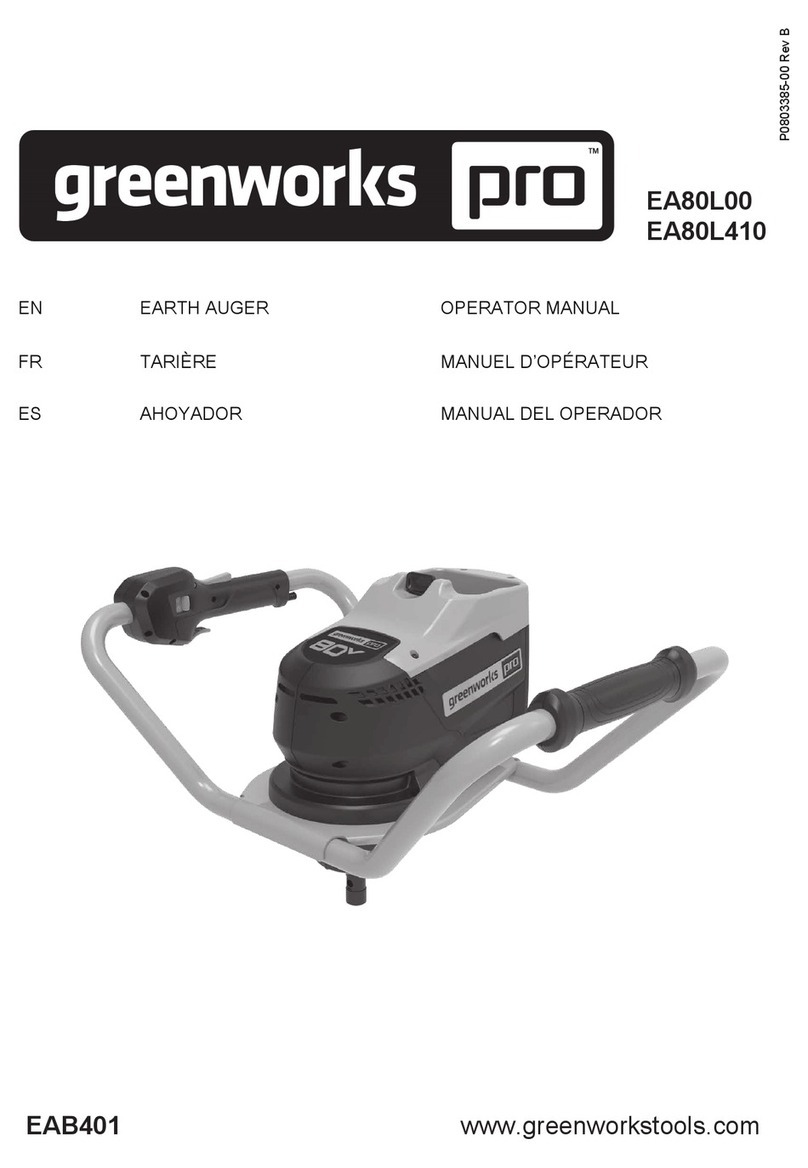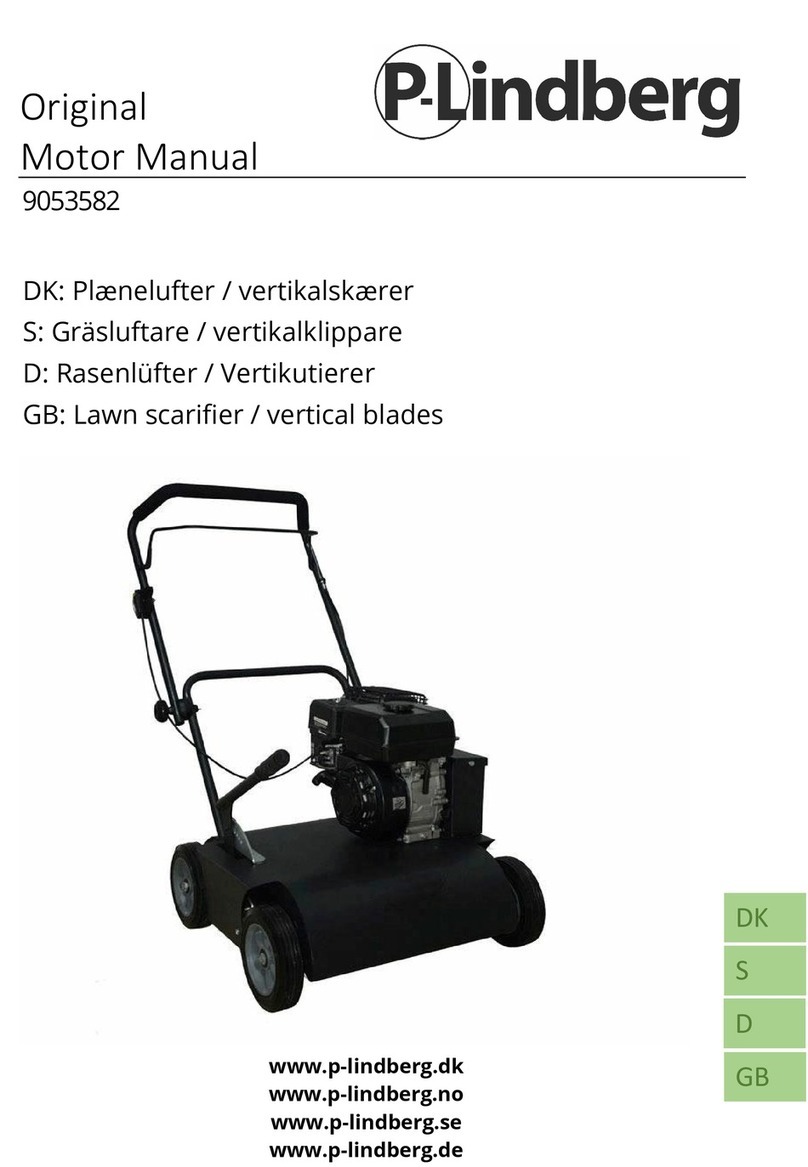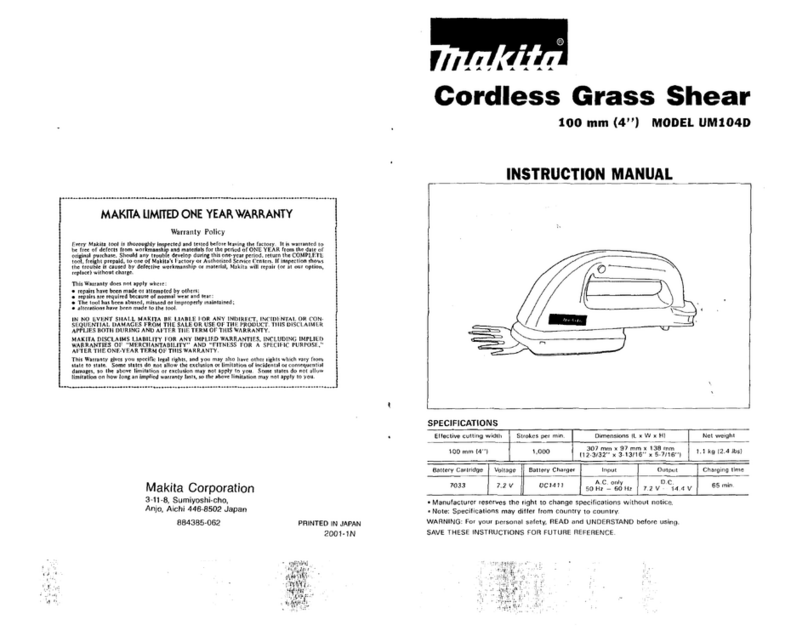
2.3 OPERATION
• Do not put hands or feet near or under rotating parts.
Keep clear of the discharge opening at all times.
• Exercise extreme caution when operating on or crossing
gravel drives, walks, or roads. Stay alert for hidden
hazards or traffic.
• After striking a foreign object, turn the machine off and
remove the battery pack, and then inspect it for damage.
Repair any damage before restarting and using the
machine.
• If the power tool should start to vibrate abnormally, stop
the machine and check immediately for the cause.
Vibration is generally a warning of trouble.
• Stop the machine whenever you leave the operating
position, before unclogging the collector/impeller housing
or discharge guide, and when making any repairs,
adjustments, or inspections.
• When cleaning, repairing, or inspecting, make certain the
collector/impeller and all moving parts have stopped.
• Exercise extreme caution when operating on slopes.
• Never operate the snow thrower without proper guards,
keep other safety protective devices in place and working.
• Never direct the discharge toward people or areas where
property damage can occur. Keep children and others
away.
• Don’t Overreach – Keep proper footing and balance at all
times.
• Do not overload the machine capacity by attempting to
clear snow at too fast a rate.
• Don’t Force Snow Thrower – It will perform better and
safer at the rate for which it was designed.
• Never operate the power tool at high transport speeds on
slippery surfaces. Use care when reversing.
• Never direct discharge at bystanders or allow anyone in
front of the power tool.
• Disengage power to the collector/impeller when the
power tool is transported or not in use.
• Use only attachments and accessories approved by the
manufacturer of the snow thrower (such as wheel
weights, counterweights, or cabs).
• Never operate the power tool without good visibility or
light. Always be sure of your footing, and keep a firm
hold on the handles.
• Walk, never run.
• Clearing a Clogged Discharge Chute.
• Hand contact with the rotating impeller inside the
discharge chute is the most common cause of injury
associated with snow throwers. Never use your hand to
clean out the discharge chute. To clear the chute:
1. SHUT THE ENGINE(Motor) OFF!
2. Wait 10 seconds to be sure the impeller blades have
stopped rotating.
3. Always use a clean-out tool, not your hands.
• If the snow thrower strikes a foreign object follow these
steps:
1. Stop snow thrower. Release the switch.
2. Remove the battery pack.
3. Inspect for damage.
4. Repair any damage before restarting and operating
the snow thrower.
2.4 MAINTENANCE
• Check shear bolts; engine-mounted bolt, etc., at frequent
intervals for proper tightness to be sure the power tool is
in safe working condition.
• Always refer to owner’s guide instructions for important
details if the power tool is to be stored for an extended
period.
• Store Idle Snow throwers Indoors – When not in use,
snow throwers should be stored indoors in a dry, locked-
up place – out of reach of children.
• Run the power tool a few minutes after throwing snow to
prevent freeze-up of the collector/impeller.
• Do not use a battery pack or appliance that is damaged or
modified. Damaged or modified batteries may exhibit
unpredictable behavior resulting in fire,explosion or
risk of injury.
• Do not expose a battery pack or appliance to fire or
excessive temperature space. Exposure to fire or
temperature above 265°F (130°C) may cause explosion.
• Follow all charging instructions and do not charge the
battery pack or appliance outside of the temperature range
specified in the instructions. Charging improperly or at
temperatures outside of the specified range may damage
the battery and increase the risk of fire.
• Have servicing performed by a qualified repair person
using only identical replacement parts. This will ensure
that the safety of the product is maintained.
• Do not modify or attempt to repair the appliance or the
battery pack (as applicable) except as indicated in the
instructions for use and care.
• Maintain Snow Thrower with care - follow instructions
for changing accessories.
2.5 RECOMMENDED AMBIENT
TEMPERATURE RANGE:
Item Temperature
Snow Thrower storage tem-
perature range
1.4 ˚F (-17 ˚C) ~ 113 ˚F (45
˚C)
Snow Thrower operation
temperature range
1.4 ˚F (-17 ˚C) ~ 113 ˚F (45
˚C)
Battery charging temperature
range
39 ˚F (4 °C) ~ 104 ˚F (40 ˚C)
Charger operation tempera-
ture range
39 ˚F (4 °C) ~ 104 ˚F (40 ˚C)
Battery discharging tempera-
ture range
1.4 ˚F (-17 ˚C) ~ 113 ˚F (45
˚C)
5
English EN


